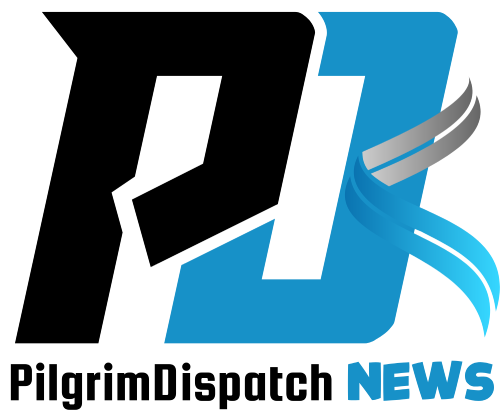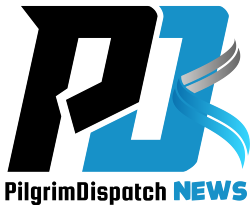As discussions about returning to the office continue, many executives believe that culture is something that only happens within the office walls. But the real culture is how we work. This includes everything from leader and team dynamics to the presence (or absence) of trust and accountability. Instead of forcing employees to come together to gather, leaders should focus on six key enablers that actually build a productive culture.
Ongoing tensions whether employees can continue to work from home or need to return to the office is often driven by culture-obsessed executives. Amazon and other companies have spent five days of office (RTO) obligations. However, this obsession misses many truths about how culture is actually created and how it leads to “good” or “bad.”
Its core workplace culture represents shared beliefs, behaviors and norms that define how we work together, i.e. how people work together to achieve a common goal. The most effective workplace culture shares key characteristics of psychological safety, the foundation of reliability and accountability, and the willingness to learn and adapt.
These elements are not conditional on physical space. Instead, they are determined by all the transactions we have in the process of doing our work and contribute to the success of our organization. Cigalvasade, a professor of business administration at Joseph Frank Bernstein at Wharton School, shows that culture manifests through complex interactions between leadership behavior, team dynamics, and individual experiences. Management sets the tone through their actions, but culture is ultimately decomposed through daily interactions at all levels.
My career included establishing the Future Forum, a consortium that ran teams at major startups, Google and Slack, and researched the future of work. Let’s explore each one by using examples.
Six keys to building a powerful culture
The power to shape culture is broad. It includes leadership behavior, team dynamics, whether or not you have trust, accountability your colleagues feel about each other, how decisions work, and which actions will reward you. Leaders can influence these factors and take certain actions to lay the foundation for people to do great work.
1. Focus on developing trust based on reliability. Trust forms the foundation for an effective workplace culture. Trust-Based Trust – The trust that your colleagues follow commitments is the basis on which an effective team is built.
Development of trust requires an accountability framework that clarifies expectations and celebrates both team effort and outcomes. This means setting a clear objective and establishing regular check-ins focused on progress rather than monitoring. It means rewarding both what people offer and how they work together.
My leadership team at Google invested a considerable amount of time to establish priorities and made clear what each person is responsible for providing. We purposefully built a “small victory” on our roadmap to boost trust among our team members. Nothing builds the confidence that you see your colleagues deliver consistent commitment.
Transparency in team performance is essential. At Google, everyone received their weekly business results. In Slack, all communications have been defaulted to public access (internally). This created transparency about expectations and showed commitments using sharing tools. Transparency reduces cancellations for those who wonder what’s actually happening. This provides the foundation for teams to support each other. Visibility strengthens the culture in which people take ownership of their commitments.
2. Develop the thinking of the first team. One of the most transformative cultural changes occurs when leaders embrace the concept of their first team. This approach, popularized by author and consultant Patrick Rencioni, involves executives who prioritize peer teams over functional silos. As Rencioni says, they are “papa bear or mama bear” to employees who already feel a deep loyalty.
To focus on the first team, cross-functional leaders need to prioritize, commit to decision-making, and hold each other accountable. The most effective organizations create visible artifacts that show how individual and team goals lead to broader organizational goals, helping everyone understand their role in collective success.
This idea is also transformed into the forefront. So this concept means that project teams are given weights at least equal to functional reporting lines focusing on collaboration and shared goals. This idea affects organizational culture by focusing on the outcome, clearer definition of responsibility, and the importance of communication.
3. Use your personal user manual to build a connection. Individual user manuals are emerging as a powerful tool to accelerate trust and understanding, especially in distributed teams. These short self-disclosures help colleagues understand how each person works best. Documents can include reflex notes about a person’s communication preferences, their values, and their motivations, strengths and areas of growth, and personal contexts that may affect their work. You can include specific prompts such as “When I’m stressed, I…” or “The best way to give feedback is…”. These details provide practical guidance for productive collaboration.
I first started using my personal user manual on Google, then practiced and carried it to Slack. One of the key lessons I have learned is that leaders need to go first and be truly open about their working style and challenges. When I shared my user manual, it included notes about my tendencies to deal with verbally and dive into behavior when I was stressed. This created a space for others to be as authentic as possible.
4. Establish a team contract. Effective workplace cultures do not rely on strict policies, but on clear agreements within each team of collaborators about how work is done. I have used extensive team contracts between Google and Slack and have further formalized my approach when building future forums.
Team contracts explicitly provide expectations about how teams will work together. The best team contracts include clear norms on three issues.
Time to focus together. Effective teams are suitable for which activities benefit most from synchronous collaboration (project kick-off, complex problem solving, retrospectives), rather than any “in-office” day, and for asynchronous intensive work (project status updates, individual headdown tasks). Ensuring “core team time” for collaboration (for example, 10am to 2pm) balances individual needs with team needs.
Expectations for communication. Clarify response times (immediately on emergency messages, same day for critical updates, and within 48 hours for non-urgent requests) to reduce anxiety and improve work-life boundaries. Teams benefit from establishing quiet times and focusing on deep work. By clarifying the tools used for outreaching outside of business hours, people can turn off most notifications at the end of the day.
Decision-making protocol. Teams that explicitly define which decisions require consensus and consultation will improve performance. DACI Frameworks clarifies each person’s role when gathering information and then acting (acronyms are based on drivers, approvers, contributors, and information). This kind of clarity reduces confusion about how inputs are built into and who makes which decisions.
These contracts should be reviewed quarterly to assess what works and adapts as needed.
5. Focus on the outcome, not the attendees. Perhaps the most fundamental cultural change needed in today’s workplace is to move from surveillance activities to measuring impact. H-fused culture perpetuates the tired belief that being driven by the hustle culture is more important than providing results.
To adopt an outcome-based approach, you need to define clear success metrics, provide autonomy about how work is achieved, and assess performance based on contribution rather than vision. This was explained in detail in a recent column, “How to Measure Outcomes,” about the success of this strategy at the high-end fashion retailer Neiman Marcus Group. A result-based approach can dramatically increase retention rates, reduce unnecessary attrition, and reduce employment time as the company’s workplace reputation grows.
The measurement system I used most, purpose and key outcomes (OKRS) is a methodology that links team contributions to broader organizational goals. Pioneered by Intel and popularized by Google, OKRS creates a vision between everyday work and strategic priorities.
To implement an outcome-based culture, training managers need to set clear expectations, provide regular feedback, and focus on impact rather than activities. It also means revising the performance management system, from delays in annual reviews to quarterly assessments of impact and teamwork.
6. Design an intentional gathering that constructs attribution. While a strong culture doesn’t require daily colocation, intentional face-to-face meetings play an important role in building connections and sharing identity. Future forums taught us the importance of quarterly gatherings designed with a clear purpose in which the pandemic is designed.
Atlassian’s research confirms what we have experienced. Purpose-driven gatherings create stronger bonds than random office encounters. The most effective organizations design retreats and off-site meetings on three core elements: meaningful work collaboration, skill development, and relationship building.
The connections established between these in-person “significant moments” supported us amongst the gatherings. At the start of the virtual meeting, we strengthened our connections through weekly social check-in and icebreakers. They also used digital tools to have fun, share jokes, and continue to connect beyond physical distances.
Organizations that win the battle of culture do not enforce strict attendance policies. They create an outcome-focused environment based on trust that makes teams clear about what is important, ownership of how work is done, and meaningful connections to shared purposes.
Navigating the continuous evolution of the workplace, thriving organizations become culture-focused as something that is actively constructed through systems and actions. The truth about good culture is that it comes from how we work together, not just places.




